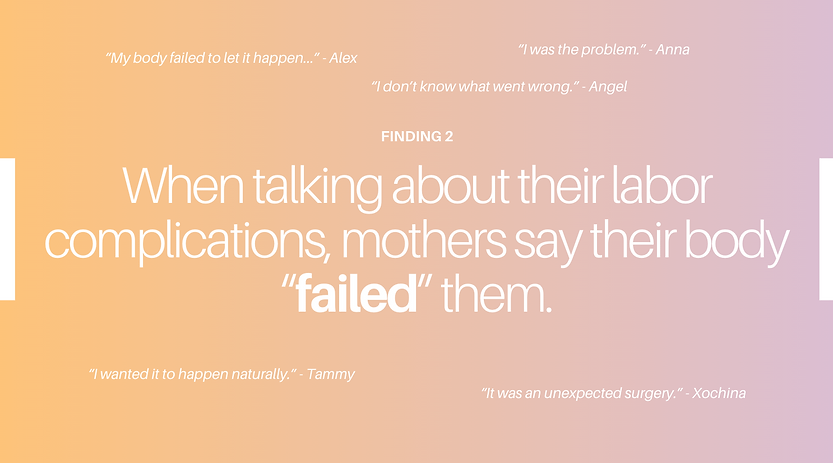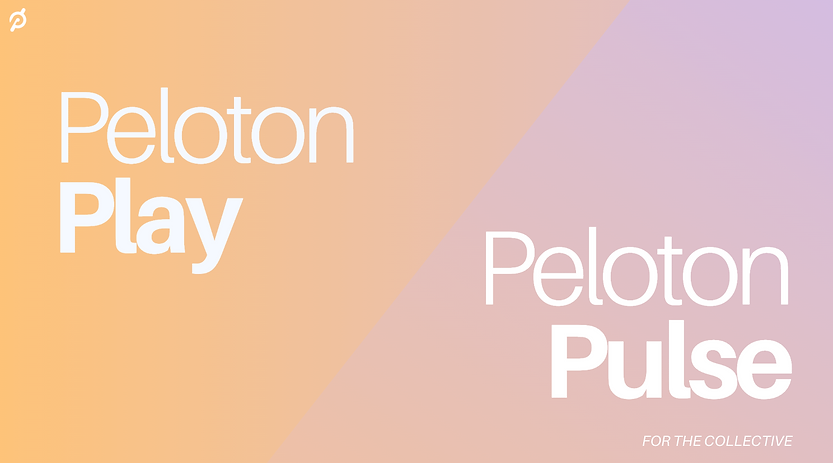
Peloton Case Study
In partnership with Peloton.
Project Brief. The goal of this project was to decipher what the future of health looks like for Peloton. This project explored postpartum experiences to uncover insights and design solutions that promote collective wellness for new mothers.
Project Type. Needfinding. User Research.
Project Overview. Through storytelling and interviews, the team identified key themes around the physical and emotional challenges mothers face, including the perception of health as a shared resource. These insights informed the development of "Peloton Better Together," a conceptual solution to foster community-driven wellness.
Project Outcome. This project was presented to Key Stakeholders from Peloton, Jump Associates, and Stanford d.school. The project delivered a design concept that integrates shared wellness tools, emphasizing collaboration and collective health for mothers and families.
Let me start us off by telling you Alex’s story.

It’s one of strength, sacrifice, and self-discovery. Alex is 35. She’s a mother of two, a design producer, and a perfectionist by nature. As such, when she found out she was pregnant with her first, she was determined to meet not only her own expectations, but also her husband’s desires.

Alex’s husband was vocal about his distaste for C-sections, leaving Alex to strive for a vaginal birth. However, her baby was breech, or upside down, making that impossible. She poured herself into research, and even did massage therapy designed to physically flip the baby — enduring what she says is the worst physical pain she’s ever experienced in her life. But, maybe most painful of all: she blamed herself. To her, her body had failed her:
"I was the problem."
For her second child, she fought for a vaginal birth in order to redeem herself in her own eyes. And even though she had one, her postpartum recovery was grueling due to societal pressures to have her body “bounce back.” Through all of this, Alex’s love for her children pushed her to keep going. Her journey reflects the tension many new mothers face: the pressure to meet impossible expectations, to sacrifice their health and comfort for their families. Her story teaches us that wellness isn’t just an individual pursuit for mothers — it’s deeply collective.
Her story teaches us that wellness isn’t just an individual pursuit for mothers — it’s deeply collective.
STORIES
The themes from Alex’s experience aren’t unique. They reflect broader patterns of the diverse group of mothers we got to know and understand through our research.

We interviewed 12 Postpartum Mothers on what health and wellness means and looks like to them. These findings were derived on their findings
FINDINGS
Some repeated patterns we saw through Alex’s story—and the stories of other mothers—were clear. Our first finding was that…

Next we noticed how…

This connects to our first finding as when mothers feel that their bodies haven’t met their expectations–they often compensate by pushing themselves harder.
This leads us to our final finding...

This aligns with findings 1 and 2 by showing mothers often prioritize their child’s well-being over their own, viewing health as something rooted in their families rather than themselves. And, these perspectives reinforce finding 3: that health is perceived as a shared resource tied to their children and loved ones.
The use of words like “earned” and “failed” reveals a mindset in which their health is deeply interconnected with the well-being of their children and loved ones, emphasizing a collective responsibility over an individual pursuit.
INSIGHTS
These findings led us to our first insight...

Their health is not solely for their benefit but is distributed across their family.
Our second insight from these findings was that...

This often occurs at the cost of their personal well-being.
FRAMEWORK
From these insights we thought of a typology of those with collective vs. individual health mindsets.

This typology and idea of collective health opened up a whole new realm of needs.
NEEDS
We began to explore these needs through need mapping and from that, 4 needs in particular stood out to us…

Here are the 4 needs we decided to focus on.

The first two needs provided an interesting contradiction as fitness requires focusing on oneself, while giving family constant attention demands full presence, creating a conflict as both compete for time and focus.
The last two needs also had an interesting tension as feeling good about oneself may depend on balancing self-care and responsibilities, while ensuring the well-being of others often requires sacrifices, including putting personal needs aside.
METAPHOR
In order to understand our direction, we can think of our solution as something like a Pair of hiking boots.

-
It should adapt to various conditions—tightened for stability or loosened for ease.
-
It should be something users can take off for rest but put on again when ready to explore.
-
It should depend on the other pair, with each member’s effort complementing and supporting each other, creating a unified workout experience.
DESIGN PRINCIPLES
From these needs, we have developed 3 design principles to integrate...

Even though collective health is about community, it is also about individual self-care.
PELOTON

Peloton excels at fostering community through motivating programs and instructors. They also include community features like live leaderboards and virtual high-fives.
However, they still utilize an individual health reward mindset – when they should be viewing health as a collective, shared responsibility.
OUR SOLUTION
This brings us to...

At the core, this solution works to connect personal health journeys with shared wellness goals.
The Better Together duo meets the need for collective health by fostering collaboration, encouragement, and a shared sense of accomplishment among users.
These devices will build Peloton’s reputation for community-driven fitness. They build on Peloton’s untapped potential in connected fitness, using cutting-edge technology to unite families, friends, and broader communities in achieving shared wellness.
First: Peloton Play. This app reimagines community fitness by creating a space where wellness becomes a collective effort.

It allows users to form or join groups to set shared health goals — whether it’s families, friends, or virtual communities. With features like goal syncing, motivational prompts, and progress tracking, Peloton Play fosters accountability and support within the group.

One standout feature is Virtual Sync, where users can participate in group workouts remotely, seeing collective heart rates and performance in real-time. It creates a shared sense of achievement – even if you’re not physically together.
Designed for individuals and families alike, Peloton Play ensures that no one’s wellness journey has to be a solo effort.
Alongside Peloton Play is Peloton Pulse. Pulse takes personal tracking to a new level while seamlessly integrating its users into a collective fitness mindset.

These lightweight wristbands (that double as sweatbands) monitor heart rates, pulse zones, and movement patterns – providing real-time feedback to help users within a collective stay in the same ‘zone of rest’ or ‘zone of intensity’ during workouts.

Whether you're working out solo or in a group session, the bands ensure everyone is aligned, building a sense of unity. Pulse works independently or syncs with the Play app, making it accessible even without the full system. Affordable subscription tiers foster inclusivity and allow everyone to benefit from connected wellness, no matter their budget.
With Peloton Pulse, health is measured — and achieved — together.

Peloton Better Together redefines wellness by making it a shared experience. This isn’t just about fitness — it’s about creating connections, fostering support, and transforming health into something we do collectively.
Remember: wellness is Better Together.
Special Thanks to

What I learned...
Empathy & User-Centered Design
Systems Thinking and Insight Generation
Interviewing to Needfinding
Through Alex’s story and the research into mothers' experiences, I developed a deeper understanding of the emotional and physical challenges faced by new mothers. This reinforced the importance of empathetic storytelling and designing solutions that address both individual and collective needs.
By identifying patterns in user experiences (e.g., the tension between individual and collective health), I learned to think holistically and connect seemingly disparate data points to derive actionable insights. This skill is crucial in crafting solutions that align with broader systemic challenges.
This project highlighted how critical interviewing is in uncovering deep, meaningful insights. Engaging with users, like new mothers, allowed you to explore their emotions, challenges, and needs, which informed the design process and ensured that the solutions were rooted in real experiences and perspectives.


